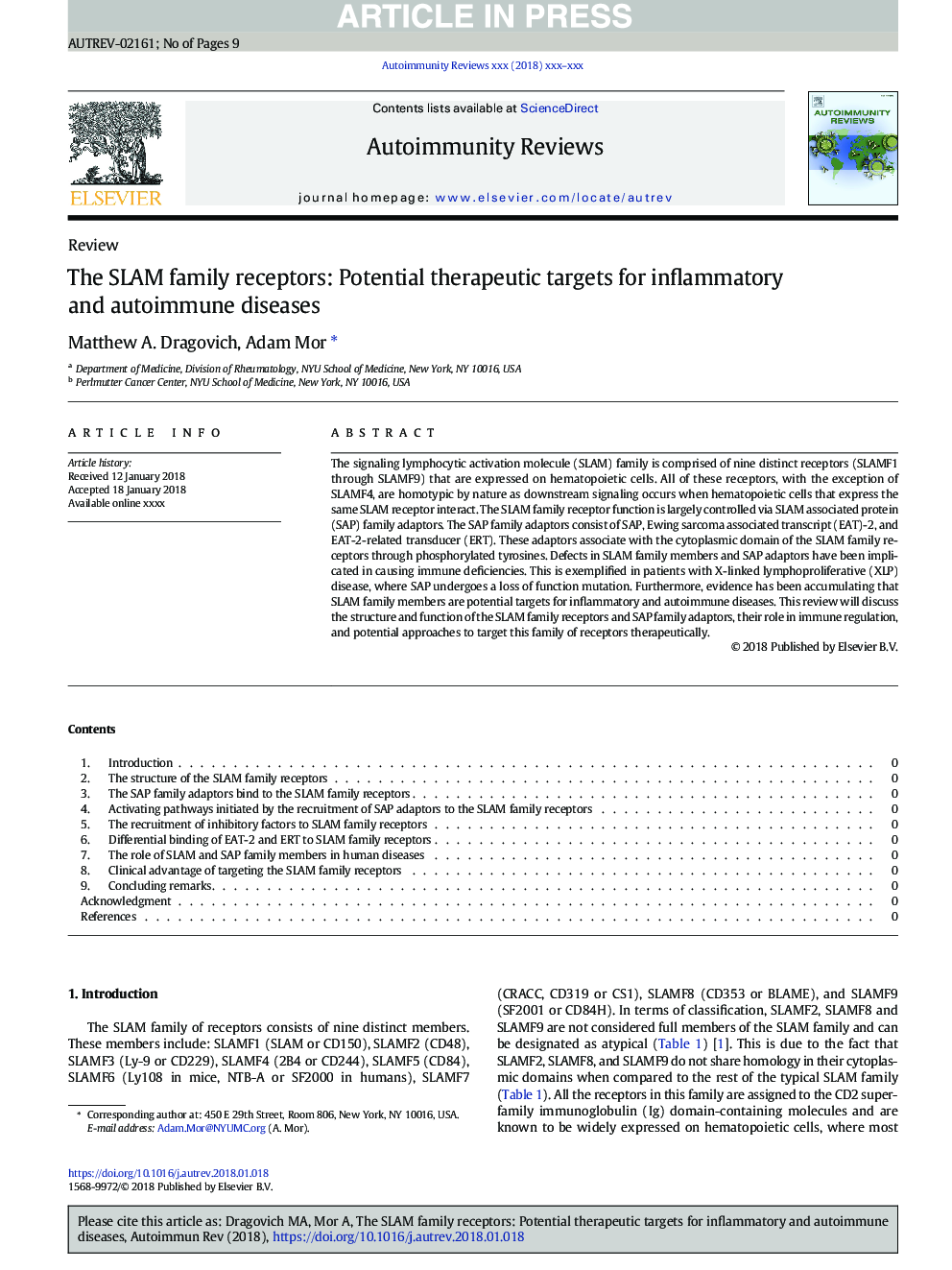| کد مقاله | کد نشریه | سال انتشار | مقاله انگلیسی | نسخه تمام متن |
|---|---|---|---|---|
| 8736355 | 1591136 | 2018 | 9 صفحه PDF | دانلود رایگان |
عنوان انگلیسی مقاله ISI
The SLAM family receptors: Potential therapeutic targets for inflammatory and autoimmune diseases
دانلود مقاله + سفارش ترجمه
دانلود مقاله ISI انگلیسی
رایگان برای ایرانیان
موضوعات مرتبط
علوم زیستی و بیوفناوری
ایمنی شناسی و میکروب شناسی
ایمونولوژی
پیش نمایش صفحه اول مقاله

چکیده انگلیسی
The signaling lymphocytic activation molecule (SLAM) family is comprised of nine distinct receptors (SLAMF1 through SLAMF9) that are expressed on hematopoietic cells. All of these receptors, with the exception of SLAMF4, are homotypic by nature as downstream signaling occurs when hematopoietic cells that express the same SLAM receptor interact. The SLAM family receptor function is largely controlled via SLAM associated protein (SAP) family adaptors. The SAP family adaptors consist of SAP, Ewing sarcoma associated transcript (EAT)-2, and EAT-2-related transducer (ERT). These adaptors associate with the cytoplasmic domain of the SLAM family receptors through phosphorylated tyrosines. Defects in SLAM family members and SAP adaptors have been implicated in causing immune deficiencies. This is exemplified in patients with X-linked lymphoproliferative (XLP) disease, where SAP undergoes a loss of function mutation. Furthermore, evidence has been accumulating that SLAM family members are potential targets for inflammatory and autoimmune diseases. This review will discuss the structure and function of the SLAM family receptors and SAP family adaptors, their role in immune regulation, and potential approaches to target this family of receptors therapeutically.
ناشر
Database: Elsevier - ScienceDirect (ساینس دایرکت)
Journal: Autoimmunity Reviews - Volume 17, Issue 7, July 2018, Pages 674-682
Journal: Autoimmunity Reviews - Volume 17, Issue 7, July 2018, Pages 674-682
نویسندگان
Matthew A. Dragovich, Adam Mor,